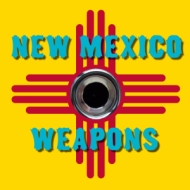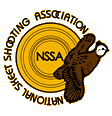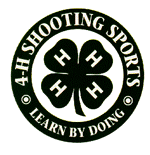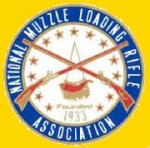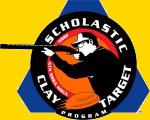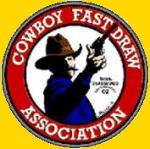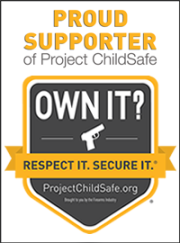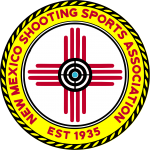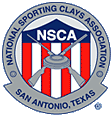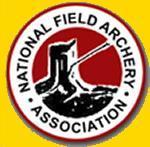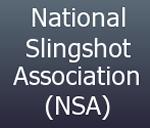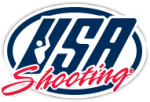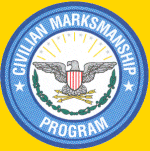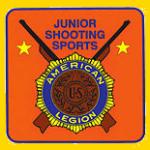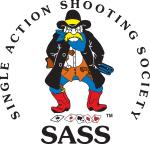The following is an excerpt from the new book Joseph Terry Presents the ABCs of Concealed Carry. Each week we’ll feature a new chapter from A-Z.
G: Good Ready
Although amusing to try, it’s impossible to count the number of times shooting depictions on TV and in the movies are wrong. And I mean grossly inaccurate. You know, where the good guys are blinding fast on the draw, always hit the bad guys and never run out of ammo. If you want to see what real gunfights look like, Google “dash cam shooting videos” and watch dirty, chaotic events where indecision is common.
When your life is threatened, the fight-flight-or-freeze hormone adrenalin will flood your system and there is not a damn thing you can do about it. Adrenalin makes you stronger and gives better visual focus on the threat but dramatically reduces your fine motor skills. Drawing a gun from the holster, finding the sights and punching out an accurate shot is a chorus of fine motor skills. Many good cops, when startled, find their body acting and their brains trying to catch up. I know because it’s happened to me.
Let’s pop another hot air balloon. You can’t draw fast enough to beat a man holding a gun on you, or an attacker who can rush you from 21 feet or less. The best you can do is anticipate the threat and be ready to draw before he can get close enough to overwhelm you; I call this “getting a good ready.”
The caution about brandishing still holds. You should not display your gun unless faced with a qualifying threat, but you can get a good grip on your gun while it is still concealed (check your laws, but it’s probably not brandishing if the gun is not visible). Assessing the threat with your hand on the gun keeps you well ahead of what the police call the “action curve,” in this case the sequence of events in an attack. Because you are mentally ready, the predator’s ability to startle you into immobility is eliminated. You have initiated your own action sequence in response to the original stimulus of his threat, and that makes a huge difference in survivability.
Whether you are ready with a less-than-lethal tool or with your hand on the gun depends on the situation. If you are accosted by a foe of equal size with no weapon and you can’t retreat, get your less-than-lethal out. If he is much bigger than you or appears crazed on drugs or has a weapon of any kind, get your hand on the gun. From your good ready if the situation turns deadly, you will have a much better chance of getting the gun out from concealment without fumbles if you already have the proper grip on it. If the situation de-escalates, because he figures you have a gun and suddenly develops a laundry problem, so much the better. A good grip on your gun while it is in concealment provides you with tactical options. I think relying on fast draw is an act of desperation and initiates an action sequence that is very difficult to suspend if the situation changes.
ABCs of Concealed Carry
So, if you decide to get a concealed carry license, discount using fast draw to get yourself out of a jam. If you go to a private shoot school (I have and I recommend it highly) and get advanced training to increase the speed of your draw stroke, I bet your instructor is going to support my contention that staying ahead of the action curve with keen situational awareness and getting a good ready with the gun is even more important.
In my opinion, fast draw is a default position if you have already lost the tactical initiative. This does not mean that your ability to get to the gun quickly and smoothly into action is unimportant. It just means that you can’t depend on it to get you out of a jam. If you are going to carry concealed, use your risk-avoidance techniques and, when in doubt, get a good ready.
Editor’s Note: The following is an excerpt from the new book Joseph Terry Presents the ABCs of Concealed Carry. Each week we’ll feature a new chapter from A-Z.
M: Movement – Tactical
In a gunfight movement is life.
Unfortunately, most carry permit holders only have access to local ranges where shooting on the move is forbidden because of the risk of accidental discharge. Always standing in one spot when you practice conditions you to try to stand in one spot when you fight. I say try because when you are startled by a sudden lethal threat, your legs may move before your brain catches up.
Listen carefully. If you have no practical experience with shooting on the move, whether your movement is intentional or reflexive, you may very well miss with every shot you fire. This is bad news for two reasons. Not only are you trying to stop a threat with accurate gunfire, but you are legally liable for the path of every bullet you launch. The balloon that you will somehow be able to learn to shoot and move “on the job” just popped.

Unless you cannot move for some reason when confronted with a qualifying threat (disability, limited space, have to protect family members, rough terrain, etc.) I recommend that you always plan to move when you shoot to stop a threat. A good shoot school or local shooting coach can teach you the fundamentals of shooting on the move on a range where you can actually shoot your carry gun while you are moving. If you can’t afford a coach or a school, you can still work on this skill with an Airsoft handgun (replica that shoots plastic pellets) in your garage.
When I say move I mean not a flat out run; instead, I teach more of a very fast crouching walk. With bent knees, practice keeping your upper body as stable as possible on a vertical plane. In other words, avoid bobbing with your upper body. When cops are taught this technique it’s humorously called the “Groucho walk.” If you are a Marx Brothers fan you know exactly what that means. When you practice keeping a handgun on target you will quickly experience how fast you can move without losing your point of aim.
Move immediately toward cover (stops a bullet) if it is available. Cover gives you great tactical options including the ability to keep the threat at gunpoint, while attempting to achieve compliance with verbal commands.
With no cover around, move to your right if you are right handed, to the left if you are a southpaw. Moving to your strong side allows you to track the target with both hands firmly on the gun with much greater flexibility. Running to the opposite side quickly limits your ability to traverse with the gun.
Move at a right angle to the threat while you are shooting, not directly away from it. If the situation requires gunfire, you can’t shoot accurately opposite your direction of flight.
Let’s pop another balloon. It’s perfectly OK to run away from a lethal threat, and if you can deliver accurate defensive gunfire while you are trying to escape the threat so much the better. I find it hard to believe that a bully or predator will want you bad enough to run into gunfire to chase you down. If you get a carry permit for personal defense you do have both a legal and moral obligation to exert reasonable control over your gunfire. You can’t just spray and pray.
The ability to shoot on the move is within the capacity of any reasonably coordinated individual, but in my opinion, practice should be limited to airsoft unless you have professional coaching.
If you learn shoot-and-move techniques you are preparing for the real world. Stationary targets at the range are not it.
6 essential drills for concealed carry
Shooting drills are a pistol instructors’ greatest ally. Often undervalued, these simple exercises strengthen students understanding of concealed carry concepts as well as basic shooting principles.
Over the course of teaching concealed carry and pistol classes, I’ve tested out my fair share of drills. While some fell short of expectations, six drills in particular always make their way into my curriculum. When conducting these exercises, observe all gun safety rules.
1. Grip: Water Bottle drill
Though we teach grip in introductory courses, it is the one area I see consistently overlooked. As it is the one aspect of shooting we can consistently control, it’s imperative that those that intend to concealed carry are able to achieve a consistent grip on their pistols. The Water Bottle drill is a dry fire activity designed to show flaws in grip before hitting the range or the streets.
One student should face a target at roughly 3 yards with firearm presented and ready to dry fire. As the student dry fires, I intermittently use an empty water bottle to lightly tap the bottom of the fire i.e. under the slide immediately after the trigger is pulled (see image). Not only does this work to simulate recoil, but it also takes students by surprise. This is the best time to analyze grip.
A firm grip will produce little movement when the pistol is struck. If the firearm bounces around in the students’ hand, then feedback should be given and their grip tweaked until no movement occurs.
2. Trigger control: Balancing Act
Jerking the trigger causes shots to land outside of the intended target. When concealed carrying, we always want our shots to land on target so as not to hit innocent bystanders so it’s imperative that we train and we teach good trigger control. My favorite drill to demonstrate proper trigger control is called The Balancing Act.
I prefer to first demonstrate this technique prior to turning it over to the students to practice. For this exercises, an unloaded pistol is required. Ensure all weapons are clear and verified by another student.
Get into preferred shooting position. Next, place a snap cap or coin (quarters work best) on the slide towards the nose of the gun. Pull the trigger. If the snap cap or coin is still resting on top of the handgun, then a straight and fluid pull was achieved. If the coin or cap tumbles to the floor, well then it’s time to work on eliminating the jerk.
3. Accuracy: Natural Aiming Area
Again, like trigger control, accuracy is imperative when concealed carrying. We don’t want to hurt innocent people so we must stay on target when we draw and fire. The preferred drill for improving accuracy is the “Natural Aiming Area” exercise.
When conducting this one in class, I prefer to have laser trainers ready for student use. These give instant feedback and I find students respond well to them. If laser trainers can’t be used, have students dry fire with their handguns. Before dry firing, ensure the firearm is clear and empty.
Students should face a target 3-5 yards away. For this drill the perfect target is usually a light switch or doorknob. The student should present the gun and then close his or her eyes. Have the student draw a figure eight with the gun. When using a laser system, have the student pull the trigger and then open their eyes. Evaluate where the laser landed in relation to the target. When dry firing, students may still pull the trigger but should focus on where their sights are aligned and where the firearm is pointed.
This is not about precision, but about accuracy. If the student is lined up on the doorknob or light switch then no need to alter anything; however, if the student is off target, adjust stance and grip until the exercise can be accomplished correctly.
4. Presentation of firearm: Drawing from concealment at ‘threat’
This sounds like an obvious drill, but you’d be surprised at the amount of concealed carry classes that don’t actually teach how to draw from concealment. Liabilities play a large part in some facilities opting not to teach this, but with inert training aides and laser systems there’s no reason to sit this one out. I’ve found students respond well to the practice and let’s face it; they’re in class to learn how to conceal.
Having explored the concealed carry world largely on my own, I have accumulated a vast expanse of holsters in all sizes and varieties. Instead of tossing them, they sit in a large bin that I pull out just for concealed carry classes. Students get to pilfer through, choose one and holster up. All firearms are unloaded and verified at this point and once checked, firearms go in the holsters.
Students are required to adequately conceal their pistols meaning, no printing. Then I have them mill about the rear of the classroom. I give them a few seconds to calm down, get comfortable carrying, and then I call “Threat!” At threat, they must present the firearm at one of the targets on the wall. Students should hold this position until evaluated by the instructor.
When we conduct this drill, we’ve already run through the previously mentioned exercises. Students should have a good grasp on grip at this point, so instructors shouldn’t focus exclusively on that aspect. Instead, the focus should be on ensuring students are able to draw successfully from concealment and do so safely, i.e. not sweeping.
This exercise is most useful to students because it gives them the opportunity to put what they are learning to practice and evaluate if the clothes their wearing will work for concealed carry. It’s also a great opportunity for students to get an initial opinion on what kind of holster might work best for them.
5. Malfunction: Tap, Rack, Pull
“Tap, Rack, Pull” doesn’t sound that exciting but it is a drill I think every instructor should employ in class. When things go wrong, they tend to go terribly wrong and self-defense situations are not exempt.
This drill is simple. Call students up one a time and use snap caps to introduce a “failure” in the student’s firearm. The student must then tap the magazine, rack the slide, and pull the trigger. Ensure while the student is handling the firearm, they are keeping it in a safe direction at all times.
There’s nothing fancy here with this exercise; but it’s a good one to get students comfortable with clearing their own malfunctions and also familiarizing them with assessing problems.
6. Awareness and assessment: Scan and Assess drill
Tunnel vision is a physiological reaction to adrenaline hitting the system. The dangers associated with this reaction is that concealed carriers may be so focused on the target ahead, that they might miss the bad guy creeping up from the side. Safe for dry fire or live fire, the very versatile “Scan and Assess” drill promotes awareness in students.
For this drill, students will fire three shots, look left and right, then re-engage the target with three more shots. To spice this drill up further, you can require students to fire, scan, and then change positions before firing again. On the range, instructors can also throw some colored paper into the mix and require that the first set of shots land on one color while the second round must land on a different color.
This activity is good to run both in the classroom and on the range. I suggest doing both to better prepare students.
Final Thoughts
Though we can’t control every aspect of concealed carry and defensive scenarios, we can give our students a fighting chance with preparation. Simple drills designed to improve grip, trigger control, accuracy, drawing and awareness produce well-rounded concealed carriers and that’s whom I want on my side.
The following is an excerpt from the new book Joseph Terry Presents the ABCs of Concealed Carry.
F: Firearms That Fit
In order to be effectively armed as a citizen with a carry permit, the gun you use should fit both your hand and your risk profile. At the gun store, the clerk is most likely to show you guns based on what caliber (size) bullet it shoots. Let me tell you why I think that is exactly backwards.
First, let’s pop another attitude balloon. What the gun shoots is much less important than whether you can hit anything with it. Cops know there is no such thing as an instant stopper handgun round. The mechanism of incapacitation is either psychological or physical. My research indicates how fast this happens to an assailant has little to do with what you shoot them with. Many people learn most of what they know about ballistics from the movies where handguns blow the bad guy back 10 feet. This never happens in real life. Thus, “This gun is a good stopper” baloney is perpetuated.
Second, the more powerful the handgun the harder it can be to hit anything under stress because of recoil. This can be especially pronounced in the multiple-shot strings that physical incapacitation usually demands. This is why the police say, “A hit with a .22 is better than a miss with a .45.” Highly motivated shooters can learn to tolerate recoil through frequent practice but for the average person, if the gun stings or twists in the hand when they shoot it, they have too much gun. Too much gun translates into low-hit-probability under pressure.
If a particular gun fits your hand it tends to point naturally at the target. This is easy to test. At the gun store, hold the unloaded gun in your off-side hand. Pick a spot on the wall about 15 to 20 feet away and look at it intently. Without looking away from the spot, close your eyes, grab the gun in both hands and point it, eyes still closed, at the spot. Now, open your eyes and check the sights. If they align within 12 inches or so of your spot on the wall the gun fits your hand. If it doesn’t, pick another gun and do another test.
Smaller guns are much easier to conceal comfortably on your person than bigger guns. I suggest unless you have a high-risk profile, you should keep your gun size small to encourage regular carry. Smaller guns will probably be in a less powerful caliber, but that could be a plus if you have not yet learned to manage recoil well. If you start small, you can always go bigger later on. If you start too big in mass and caliber, your initial experience with the gun may be so negative that you forsake handguns entirely as a viable safety tool.
ABCs of Concealed Carry
I part company with the current fad of semi-automatic pistols and recommend that new shooters operating in a low to moderate risk profile start with a short barrel revolver as their concealed carry firearm. This type of handgun generally points well, is light and easy to conceal with various gun-holster combinations, is able to shoot low-recoil practice cartridges that makes range-time more fun, and is much easier for new shooters to manipulate under pressure.
The revolver vs semi-auto controversy is covered later. But let’s just remember I said start with a short barrel revolver. If you become a hobby shooter you can always change your mind later and get another gun to fit your evolving shooting skills and carry needs.
The most important thing is not to let the movies or this book or the guy at the gun store try to tell you what your priorities are. All of these gun-choice decisions involve trade-offs. A bigger gun carries more ammunition and sometimes punch, but if it is too big for you to carry comfortably every day, you are more likely to leave it home. If you are going to carry a gun, I think you should start small and grow with your skill level.

